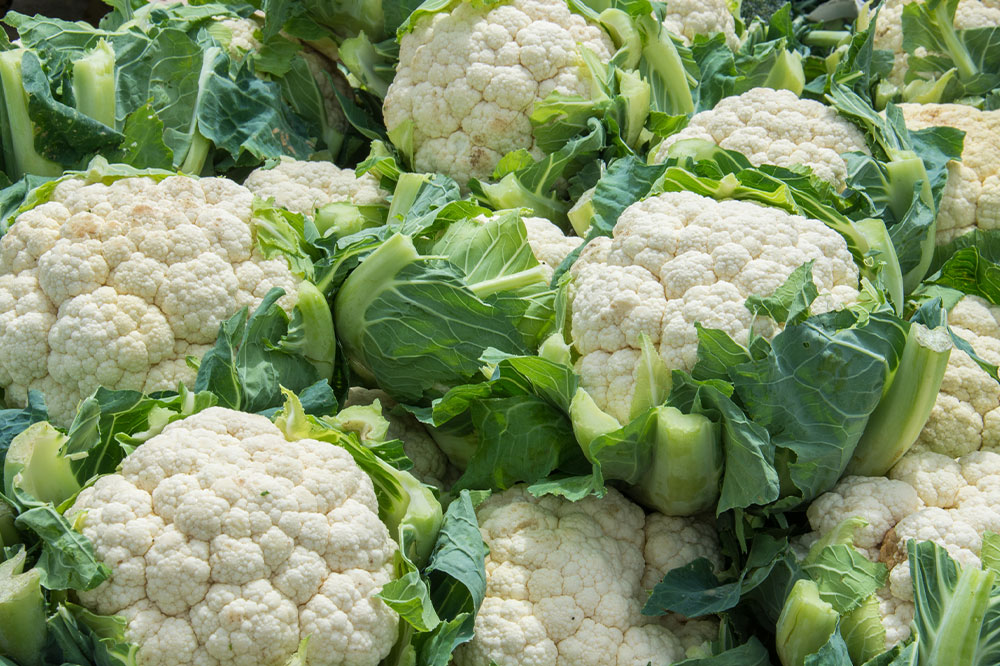10 foods to have for a healthy bladder

The bladder is a type of muscular sac located just above the pubic bone behind the pelvis. Its primary function is to collect and store the urine produced by the kidneys. The bladder can hold 400 to 600 ml of urine produced in a day before it is evacuated from the body. Foods and beverages consumed daily play a crucial role in maintaining bladder health. So here are ten bladder-friendly options to assist organ function.
Cauliflower
Cauliflower is a rich source of fiber, folates, vitamin C, vitamin K, and mainly indoles, a specific plant chemical compound that is effective in countering inflammation in the urinary tract. Broccoli and cabbage are also excellent cruciferous vegetables to consume regularly. In addition, nutritionists suggest kale and collard greens, among other cruciferous vegetables, to boost fiber and antioxidant intake.
Watermelon
Water helps the body flush out toxins by way of urine. Thus, including water-rich fruits and vegetables like watermelon, cantaloupe, papaya, peaches, and coconuts can help boost hydration. This is one of the reasons why urologists also suggest drinking more water as it helps dilute the urine and increases the frequency of urination.
Assorted berries
Cranberries and cranberry juice are generally recommended for managing bladder and urinary tract infections. Blueberries are also potent antioxidants to include as a snack option as it is low in sodium, phosphorus, and potassium, and high in vitamin C, which helps the kidneys filter out fluids more efficiently. Strawberries and raspberries additionally help boost the acidity content in the bladder to fight off bacteria growth and prevent UTIs.
Bananas
Those who suffer from constipation have trouble passing motion, and this forces the intestines to become enlarged. An enlarged intestine further puts pressure on the bladder and urinary tract. Bananas are rich in fiber and potassium that help speed up digestion and bowel movements to relieve this pressure and promote a better urine flow from the bladder to the tract.
Potatoes
Regular potatoes and sweet potatoes can be consumed to promote bladder health. According to many studies, the veggie is known to have a calming effect on a sensitive bladder. Plus, it is easy to incorporate potatoes into daily cooking.
Lean proteins
Chicken and turkey meats are lean sources of protein that are easily digested and don’t put pressure on the internal organs. Also, they are low in fats, additives, and preservatives and don’t trigger inflammatory responses.
Eggs
Eggs are a rich source of omega-3 healthy fats that counter inflammation. The food item is also rich in lean proteins suitable for bladder health.
Assorted nuts
Almonds, cashews, peanuts, and macadamia nuts are great low-calorie healthy fats to also include as part of one’s bladder-friendly daily meals.
Garlic
Garlic is a potent antibiotic that helps manage a number of digestion problems, intestinal issues, and urinary tract infections. Garlic cloves can be consumed raw or included in daily cooking.
Whole grains
Whole grains are digested slowly, so they don’t put pressure on the bladder and digestive tract, making them a great source of fiber to include in daily foods. Popular choices include quinoa, buckwheat, oats, and bulgur wheat.



